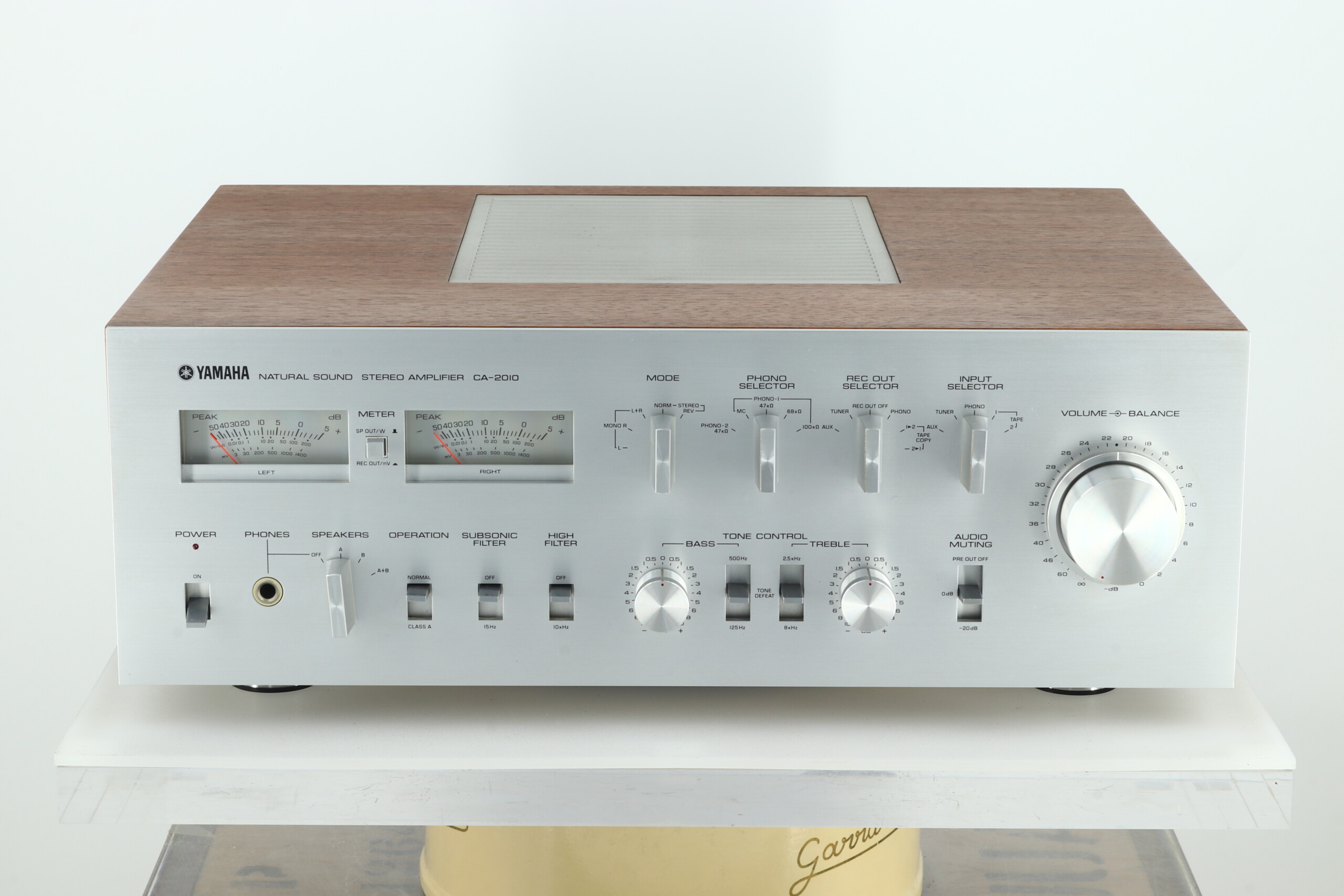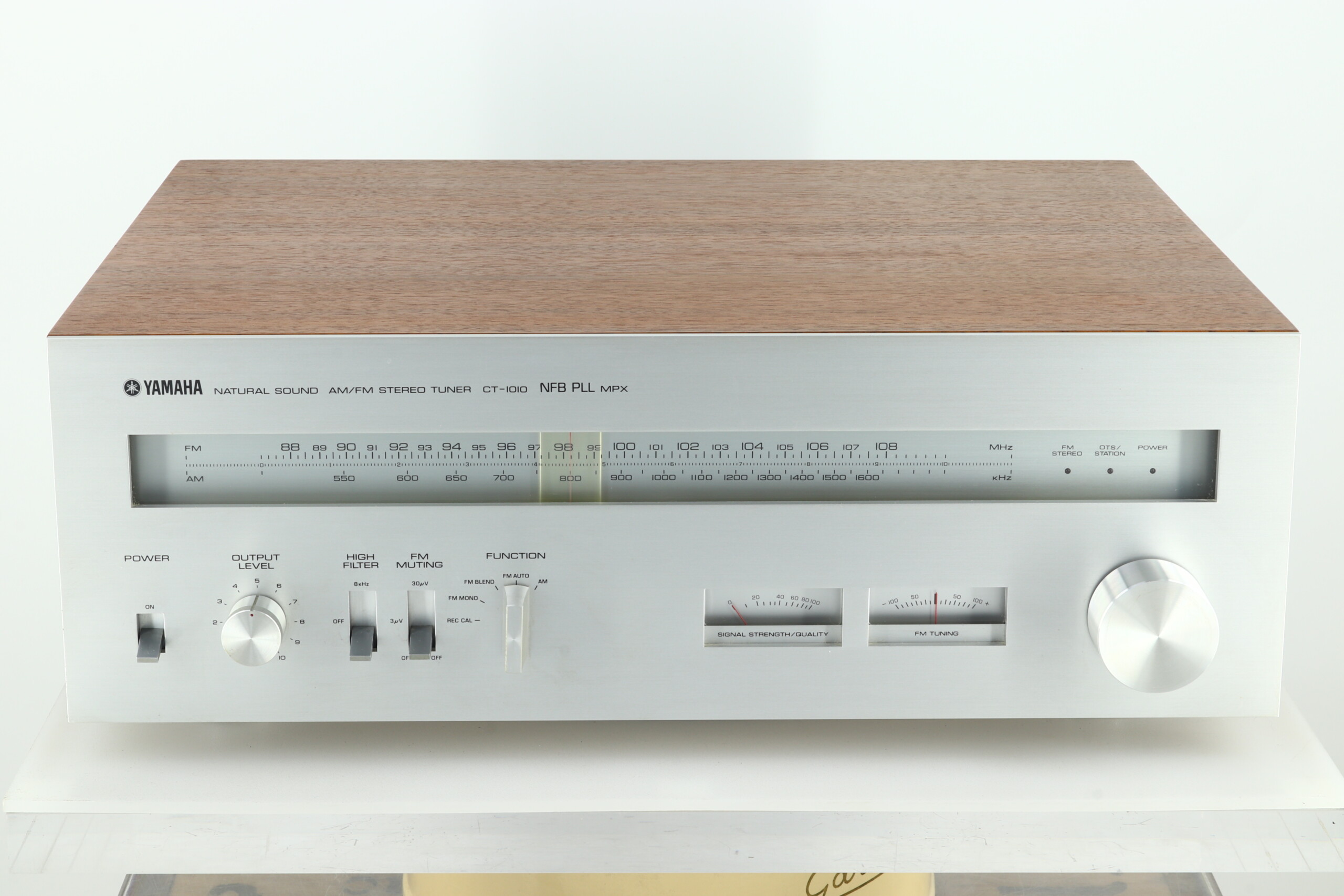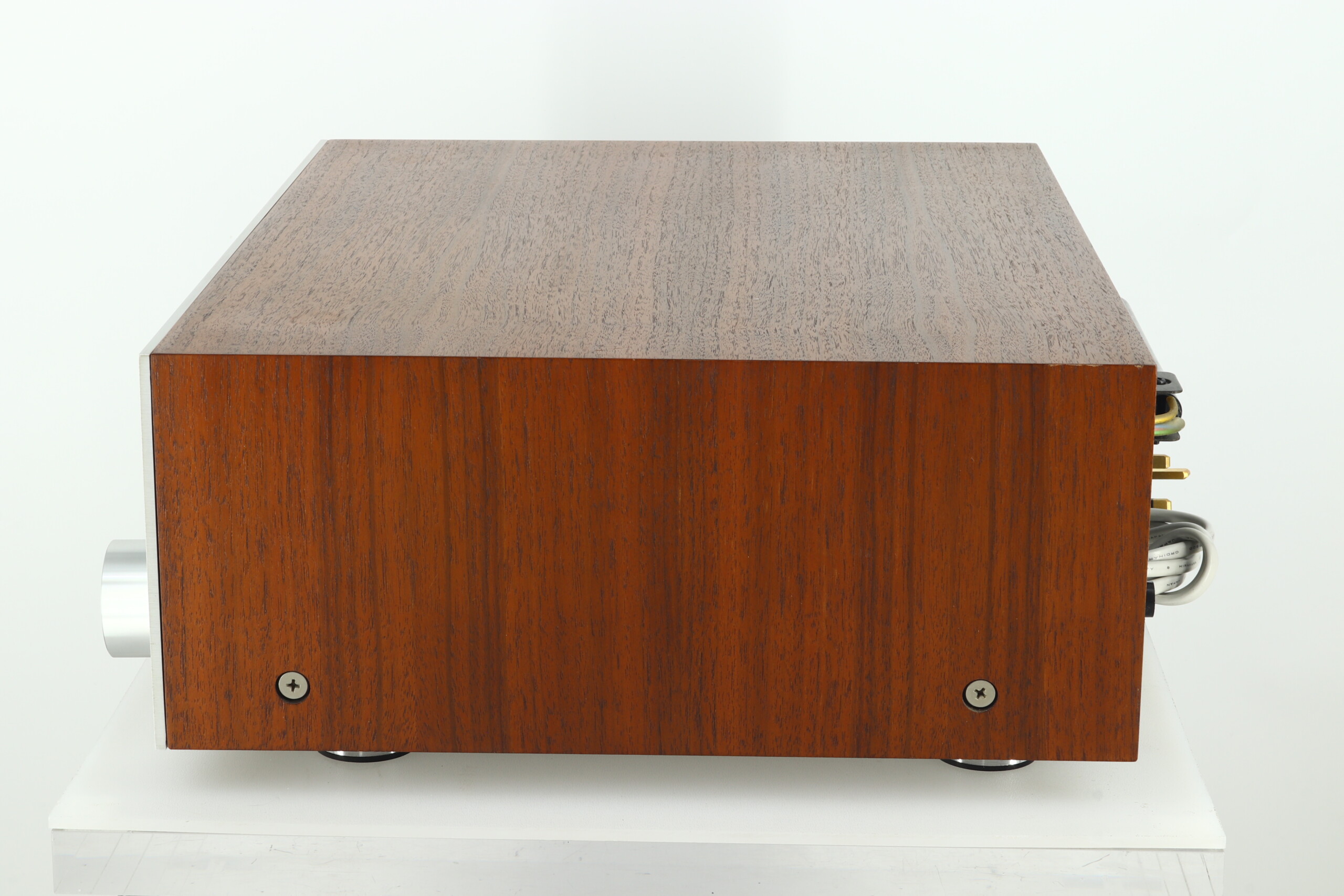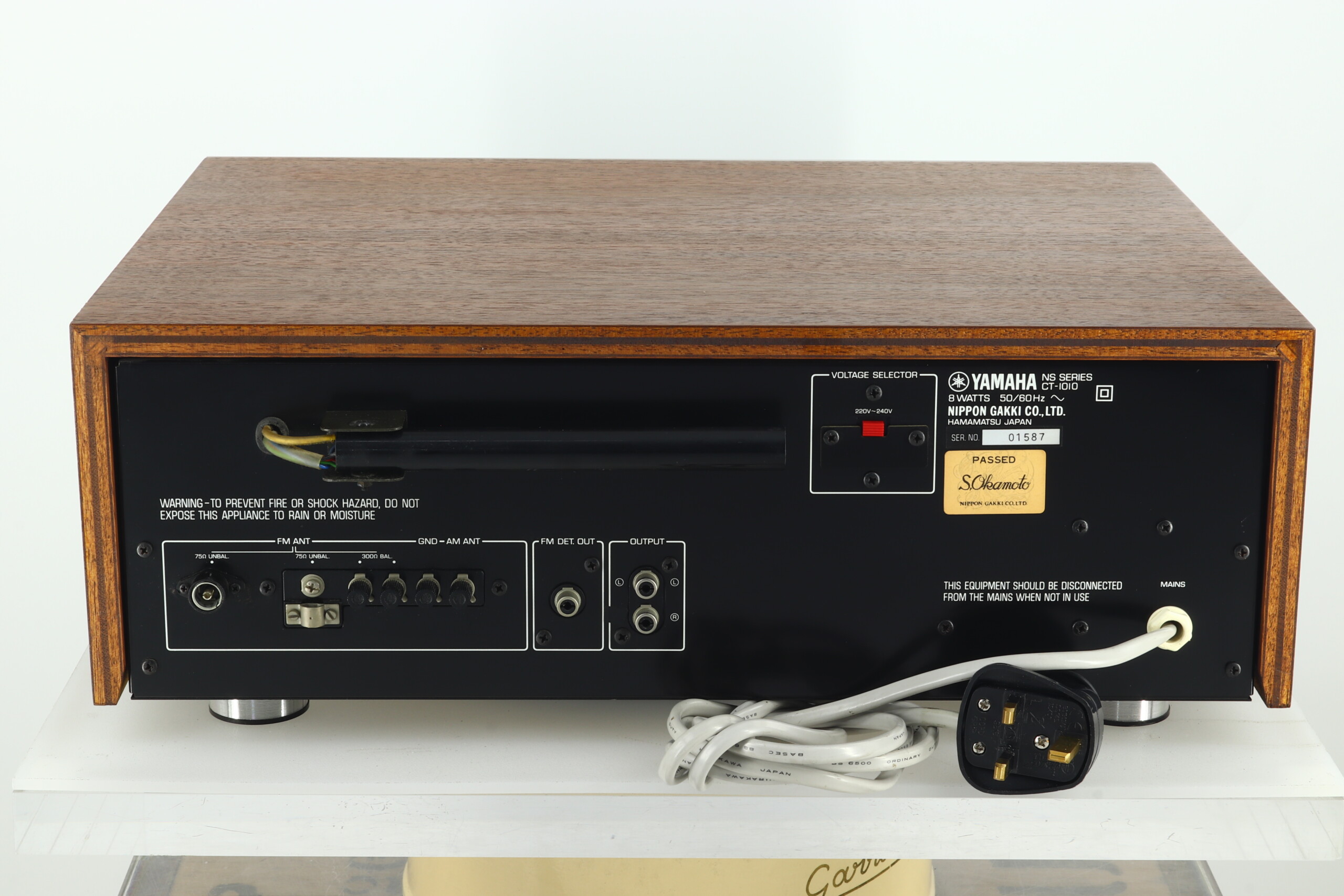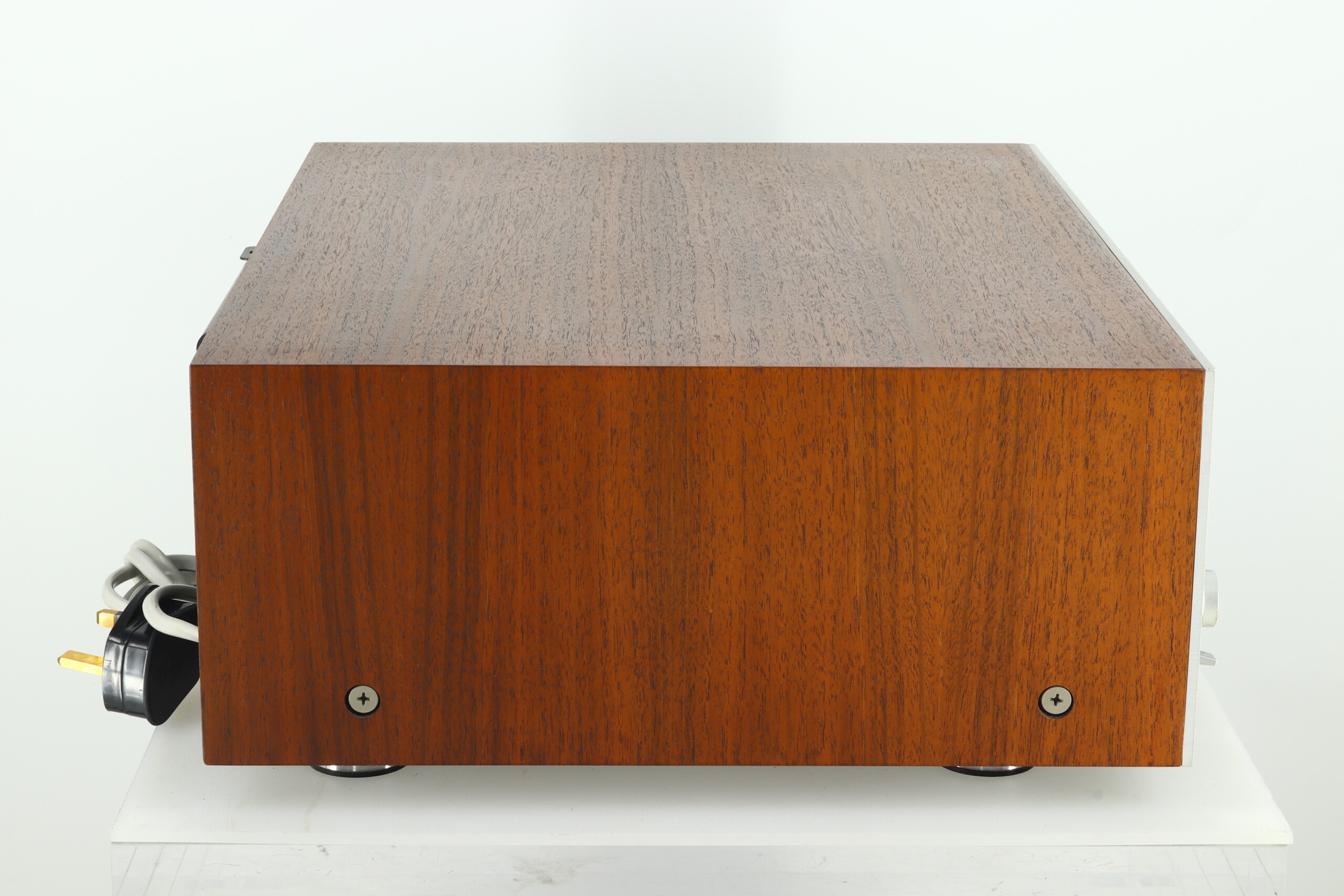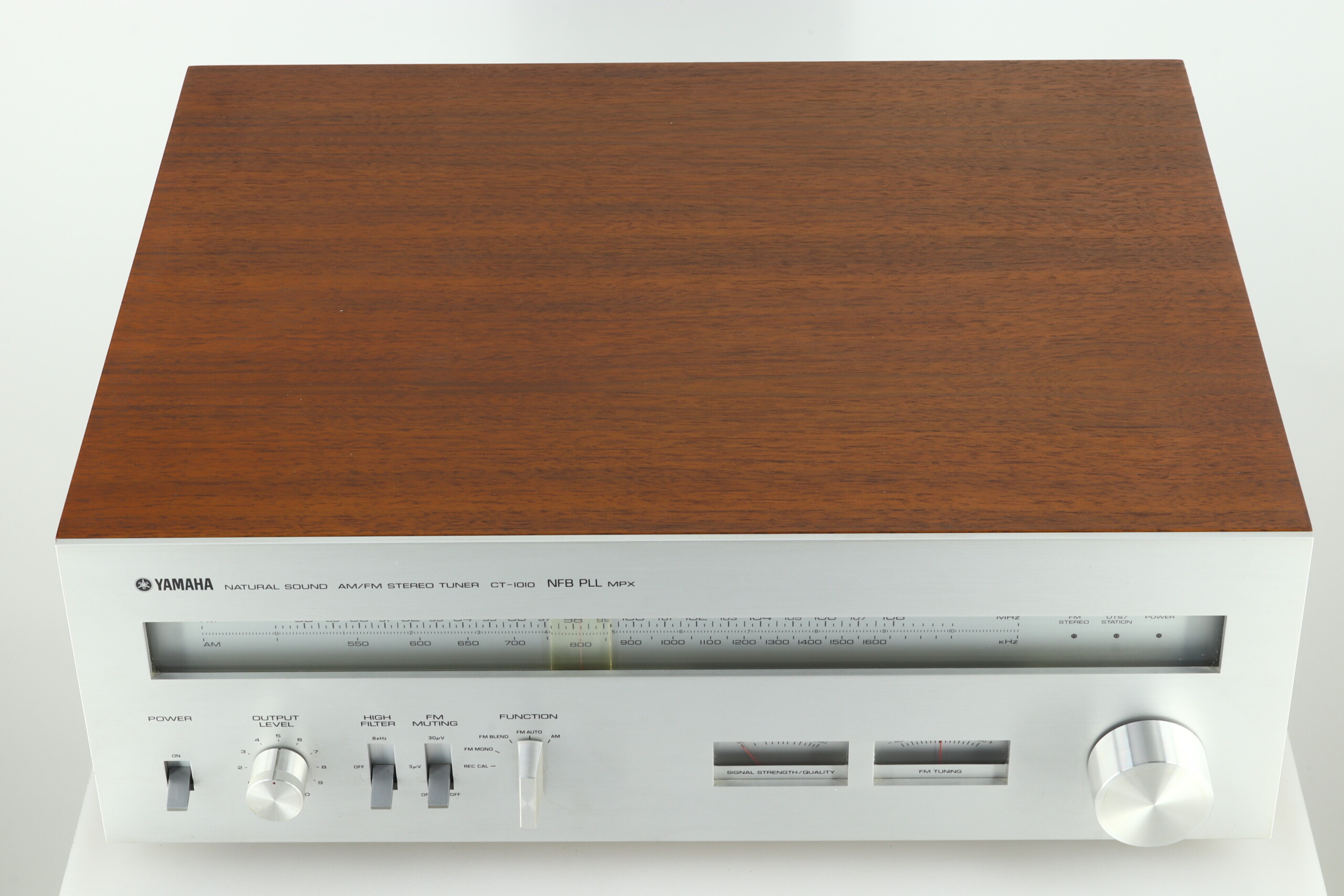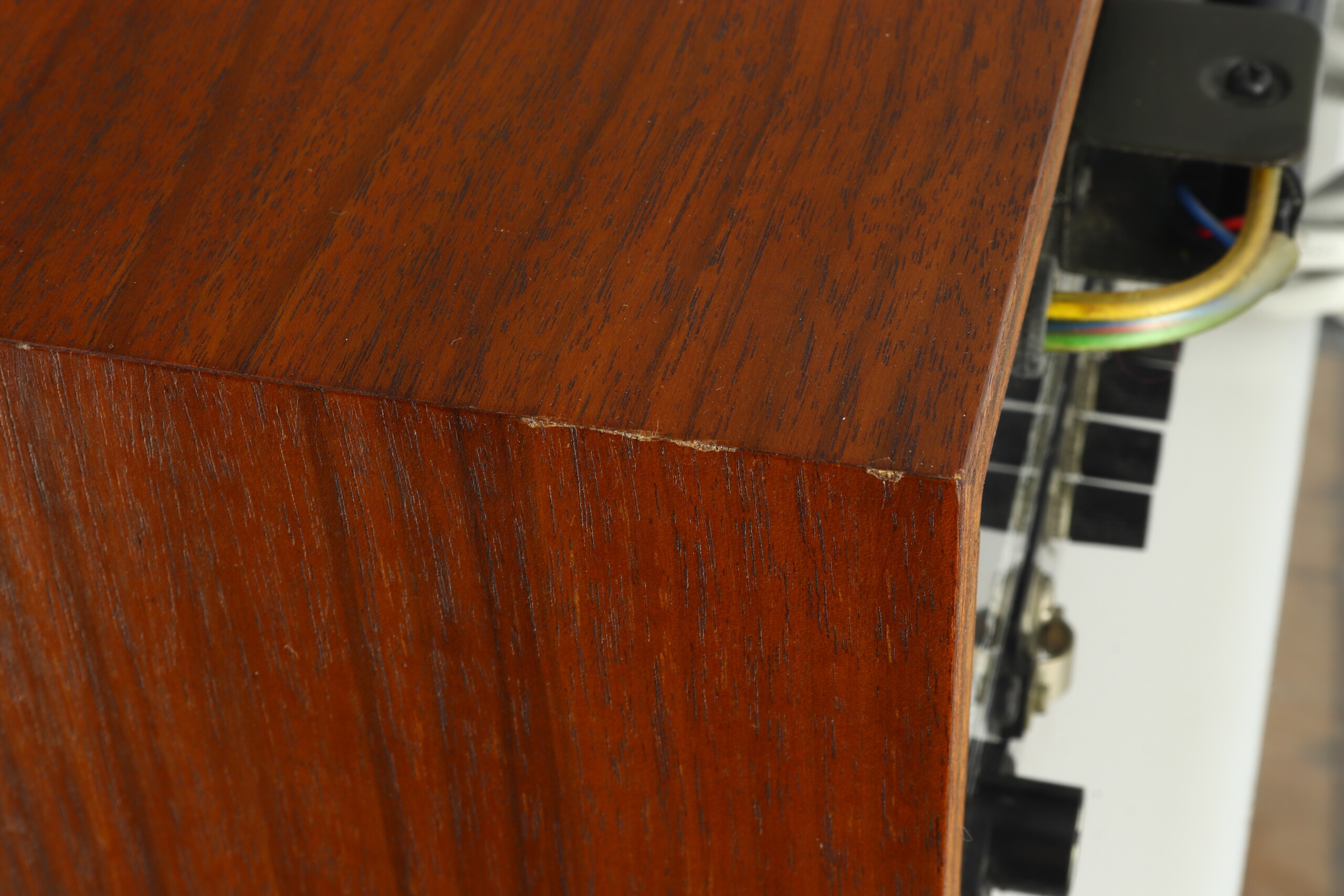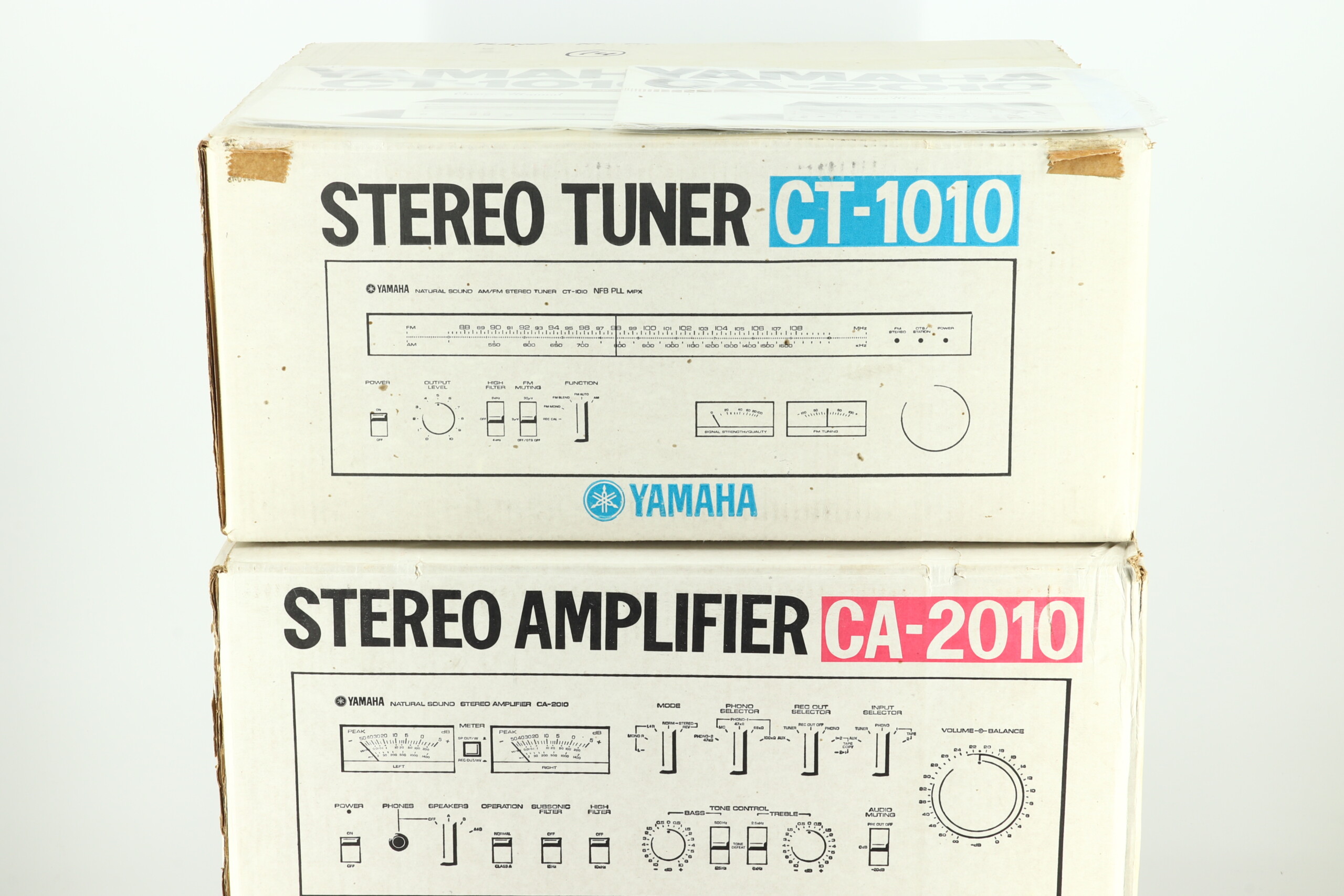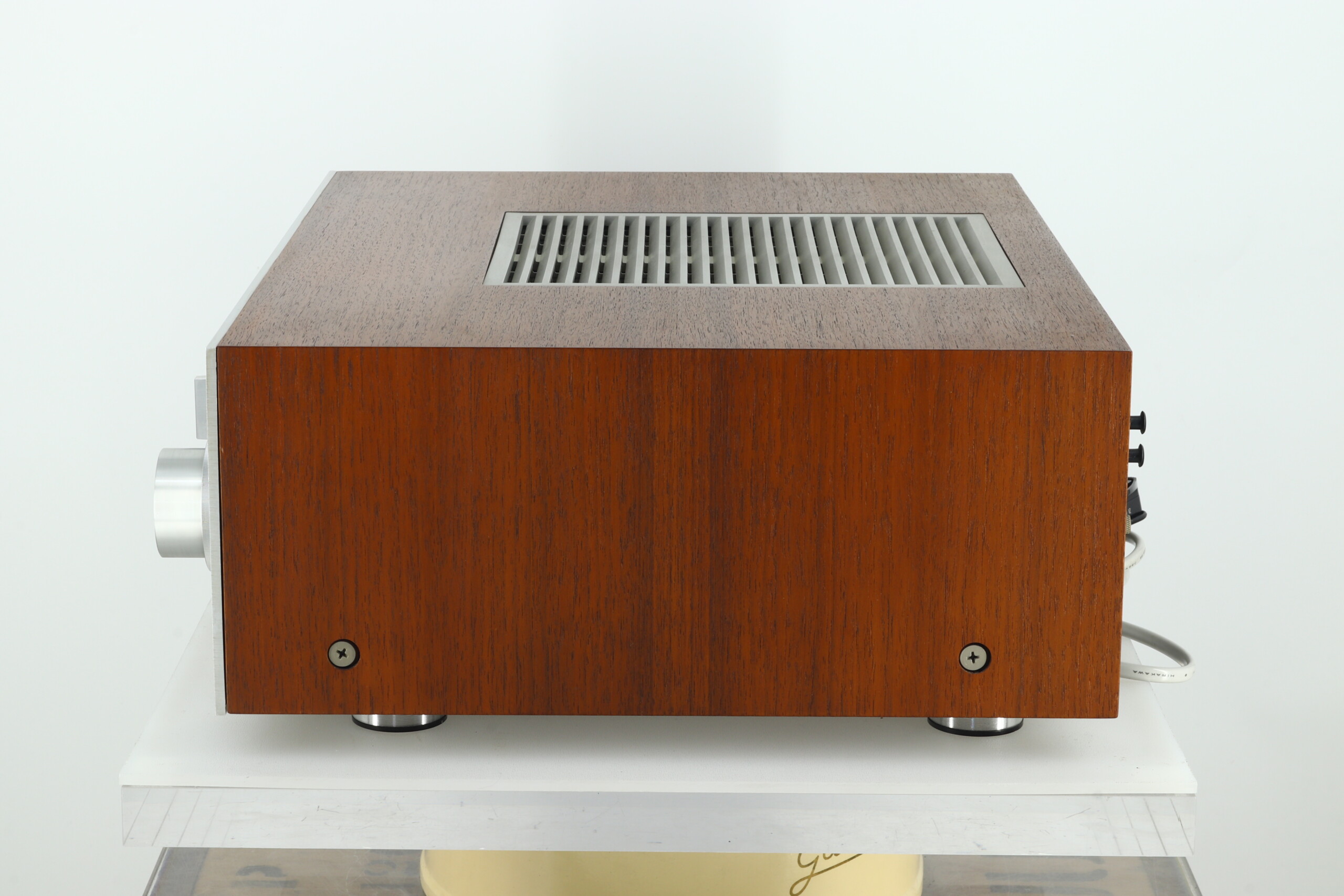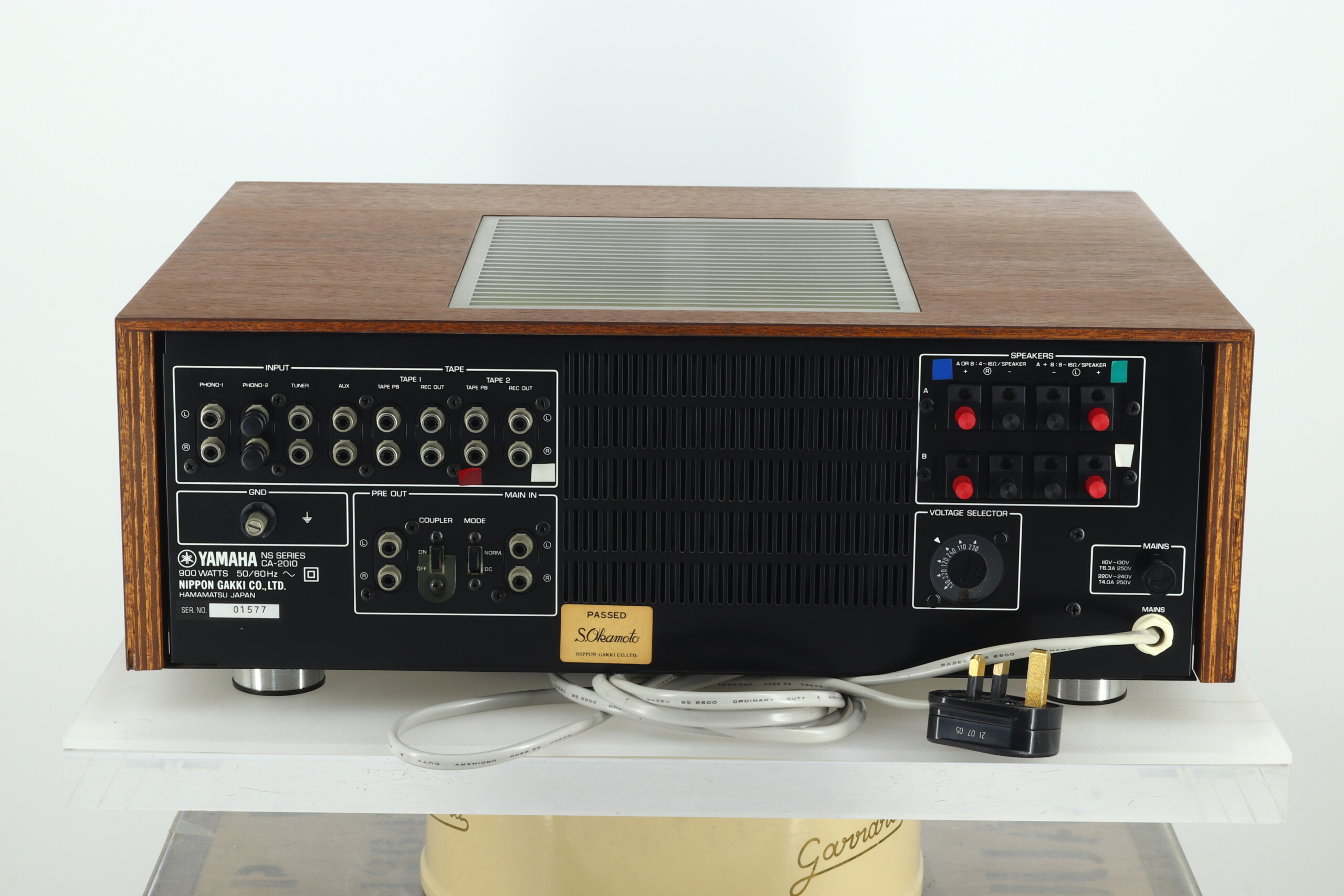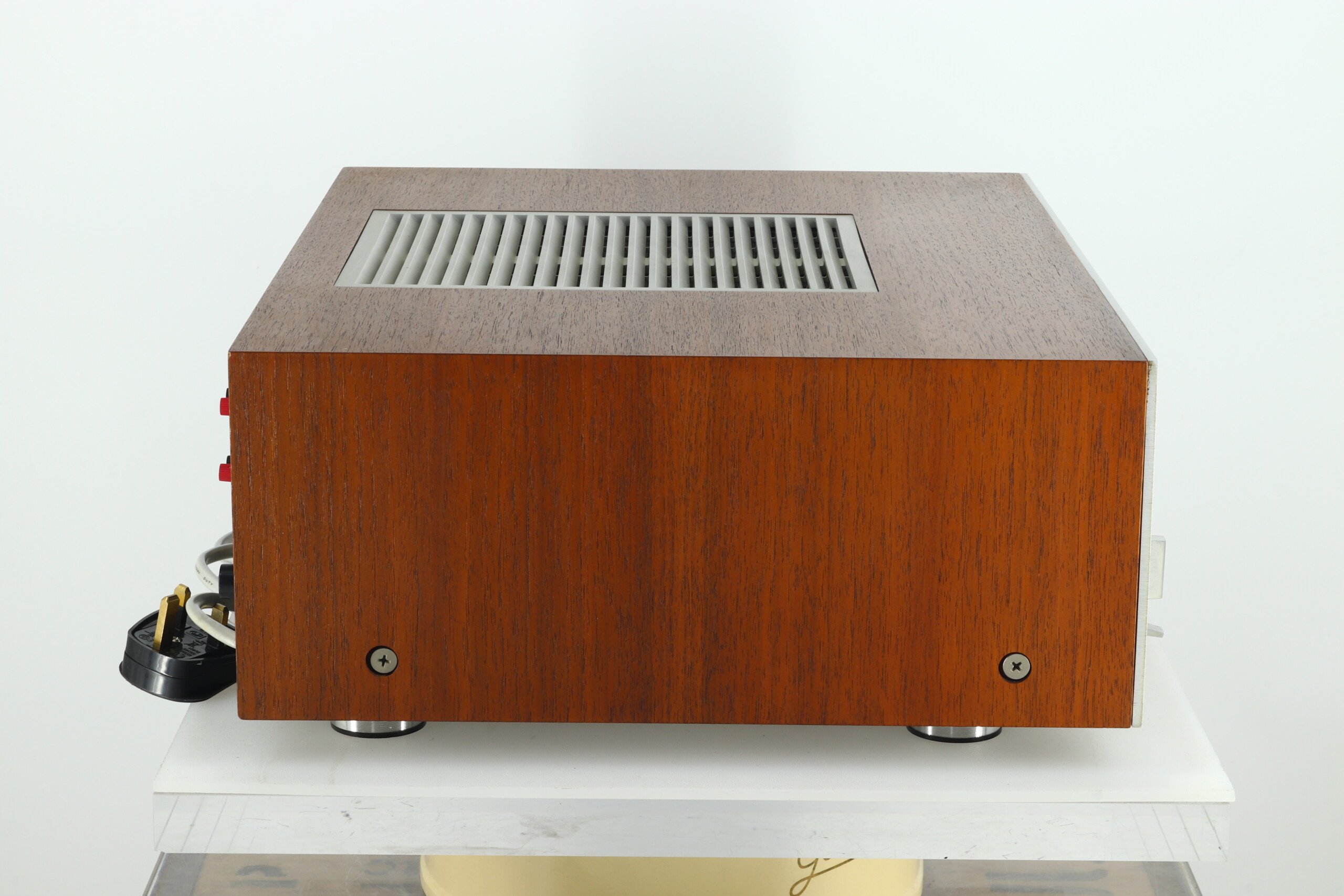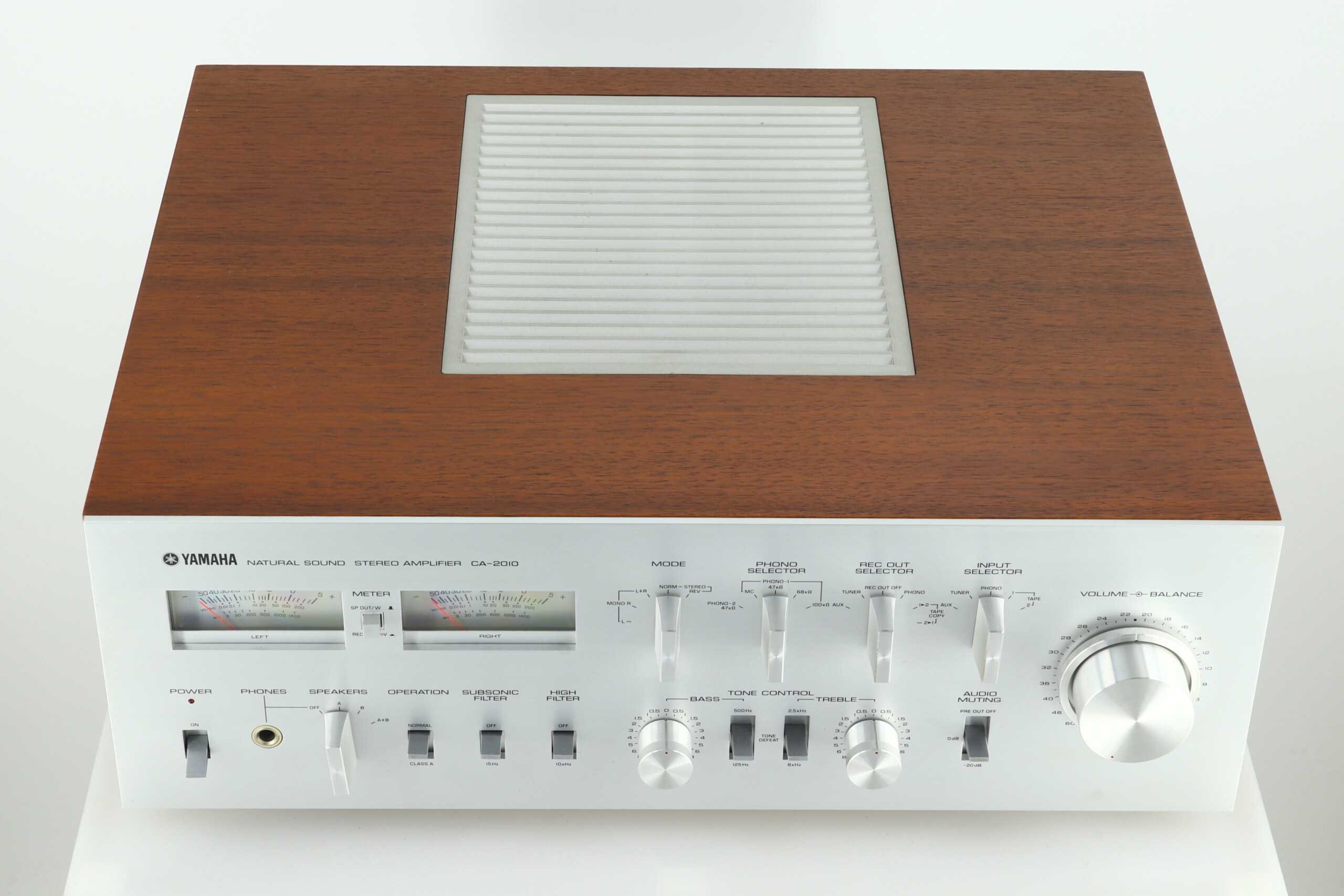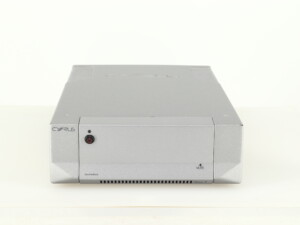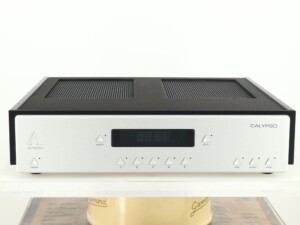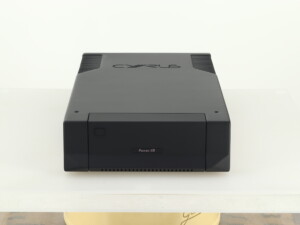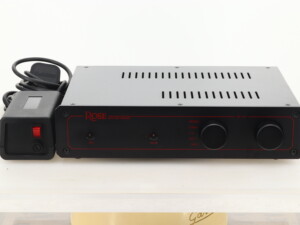Your basket is currently empty!
Yamaha CA-2010 Integrated Amplifier and CT-1010 AM/FM Stereo Tuner
£995.00
Manufacturer : Yamaha
Model : CT-1010 / CA-2010
Serial Number : 1587/1577
Packaging : Original
Accessories Included : Manuals
Price When New : ?
1 in stock
Description
Here we have a vintage pairing of a CT-1010 Tuner and CA-2010 Amplifier from Japanese music company Yamaha. They come in very good condition for their age noting a few blemishes and are also supplied in original factory packaging along with manuals and our regular three month warranty.
Yamaha Say….
Today the world’s largest manufacturer of musical instruments is also a leader in audio fidelity. For nearly a hundred years Yamaha craftsmen have been designing full, natural sound into our renowned pianos, organs, wind and string instruments – a rich musical tradition that makes us unique in the audio world. Part of the reason is our generations of musical sensitivity. But it’s also due to our immense technological and production capabilities built over decades of supplying fine musical instruments to the world.
When you have musicians and audio engineers speaking the same language the result is full natural sound fidelity, plus innovative features which translate directly into improved tonality or operating convenience. Yamaha’s insistence on total music performance, not just isolated specs, is behind a revolutionary new approach to audio component design – one that gives the CT-1010 tuner music response amazingly faithful to the broadcast signal, audibly superior to others in its class and rivalling many of the world’s most expensive components.
The CT-7000, a super-sophisticated audio component for the spare-no-expenses audiophile, first astonished fans and experts with Yamaha’s advanced tuner technology, novel features, and ultra-low distortion natural sound. Now, in the CT-1010, the spin-off from our CT-7000 development program makes the same performance advantages available to a far wider circle of fans.
The unusual CT-1010 front-end circuitry and components pick up the most distant, low signal-strength stations with surprisingly high signal-to-noise ratio, excellent stability, and rejection of all forms of interference.
This pays off in a much wider choice of stations, and greatly increased listening enjoyment. And not even powerful local stations can seriously overload the CT-1010, so that reception is uniformly good in any area. The front end keeps the incoming signal clean and clear of external interference, and the IF stage is specially designed to prevent internally generated spurious signals from degrading quality. One secret is Yamaha’s direct assessment of differential gain, and another is the use of special low loss, low spurious-content ceramic filters and six stages of current limiter differential amplification!
This Yamaha-developed element is precision formed with air gaps twice as wide as conventional types, for superb frequency calibration, accuracy and stability. It is complemented by dual gate MOSFETs in the front end RF and mixer stages, and a balanced type of ratio detector which combines with two ICs in the IF stage. The results are an ultra-high standard of frequency calibration, complete stability, virtually complete rejection of interference waveforms and wide dynamic range.
This unique MPX section is convincing evidence of Yamaha’s innovative design. First developed for the CT-7000 tuner, the whole MPX section is incorporated into a negative feedback loop, with full NFB reducing distortion to a level where it cannot be measured by the most sensitive test equipment. Phase locked loop circuitry locks onto the carrier signal for unvarying stability.
Cutoff filters, often used to prevent the 19 kHz FM stereo pilot signal from interfering with other audio equipment, inevitably suppress high frequency response as far down as 15 kHz. Instead of a cutoff filter, the CT-1010 uses a perfect mirror-image of the pilot signal (inverted phase signal) to cancel it completely, while still allowing treble response to extend as far as 18 kHz.
AM reception is often overlooked in today’s stress on stereo FM broadcasts. But the AM section of the CT-1010 features a special front end for good signal-to-noise ratio, a peak detector circuit for low distortion at all signal strengths, and a stable anti-fading circuit. The AM signal even passes through the FM multiplex circuit, exploiting its ultra-low distortion without the need for a separate AM circuit (with a special equalizer to compensate for FM frequency response droop). The CT-1010 demonstrates its superiority as clearly in AM reception as it does in FM.
The world famous CT-7000 tuner featured switched narrow/wide selectivity modes for ideal reception under all conditions. In the CT-1010 Yamaha takes this advanced circuit design an important stage further. By using special test equipment which gives a visual display of the critical differential gain linearity, our engineers can combine the best of both mode settings. This means you get the high selectivity of the narrow mode (85 dB) and the extremely low distortion of the wide mode (0.07% for stereo reception at 1 kHz), but without the need to choose between them!
The Optimum Tuning System locks onto a chosen FM station for the least distortion and best stereo separation. Even if your manual tuning is slightly off-station, the OTS will correct to give crystal-clear reception. To assure easy tuning, the OTS switches off automatically as soon as you touch the tuning knob, and goes into action again after the knob is released. It can also be switched off manually, to let you tune in a weak station next to a very strong one.
In addition to the centre-zero FM tuning meter, there is a signal strength meter for AM and FM reception. During FM reception, the needle indicates the presence (and extent) of multipath and other interference by swinging or fluttering. You can easily orient your antenna for the cleanest signal while watching this variation. Similar to the multipath indication in the prestigious CT-7000, this meter versatility is an important aid to top reception.
The choice of FM Blend or Mono modes means that even weak FM stations can be enjoyed with good signal-to-noise ratios. Blend provides partial combination of the FM stereo signals, while Mono cleans up particularly
difficult signals by full combination (cancellation of the stereo effect). The CT-1010 also incorporates a Noise Filter switch, particularly effective in cutting out high frequency noise on both AM and FM. Try the 8 kHz filter first to remove noise in the extremely high frequency ranges. If interference is still present, use the 4 kHz setting.
A choice of muting levels, either 3 µV or 30 µV, means that you can choose to ignore all stations except those capable of good stereo reception (30 µV), or include those best listened to in the mono mode (3 µ.V). With muting off, all stations, even the weakest, will be heard, but so will the inter-station noise.
A standard 333 Hz signal is provided to make tape deck level setting extra-simple. Like the normal tuner output, it is fully variable, corresponding to the level of 50% modulation.
The CT-1010 is more than a tuner with superb radio reception performance characteristics; it also gives astonishingly faithful reproduction of the original broadcast sound. Throughout its long development, Yamaha music specialists listened to a wide variety of sound sources both direct, and then as received via the tuner after FM modulation. By switching between the two signal paths even the most subtle extra coloration introduced by the tuner could be detected and eliminated. The result is dramatic clarity, especially when an FM station is broadcasting ‘live’ from the studio or concert hall. The increased realism, and the faithful recreation of the live concert atmosphere, is unmistakable.
CT-1010 Specifications:
FM SECTION
Tuning Range: 88 to 108 MHz
Usable Sensitivity: 300 Ω: 1.9 µV; 75 Ω: (IHF. 98 MHz, 10.8 dBf)
Quieting Sensitivity, 50 dB: Mono: 3.2 µV (15.3 dBf); Stereo: 40 µV (37.2 dBf)
Response Ratio: 110 dB (98 MHz)
AM Suppression Ratio (IHF): 65 dB
Capture Ratio: 1.0 dB
Alternate Channel Selectivity: 85 dB
Signal To Noise Ratio (at 65 dBf, IHF): Mono: 80 dB; Stereo: 75 dB
Distortion (at 65 dBf): Mono: 100 Hz 0.07%; 1 kHz 0.07%; 6 kHz 0.15%; Stereo: 100 Hz 0.09%; 1 kHz 0.07%; 6kHz 0.15%
Intermodulation Distortion (IHF): Mono: 0.05%; Stereo: 0.1%
Sub-Carrier Product Ratio: 70 dB
Stereo Separation: 1 kHz, 52 dB; 50 Hz to 10 kHz, 45dB
Frequency Response: ± 0.3 dB, 50 Hz to 10 kHz; + 0.3/- 0.5 dB, 30 Hz to 15 kHz
Muting Threshold: 3 µV (14.8 dBf); 30 µV (34.8 dBf)
AM SECTION:
Tuning Range: 525 to 1,605 kHz
Sensitivity: 300µV/m (49 dB/m) (IHF, bar antenna)
Selectivity: 30 dB (1,000 kHz)
Signal to Noise Ratio: 50 dB (at 80 dB/m)
Image / Spurious Response Ratio: 55 dB (1,000 kHz)
If Response Ratio: 40 dB (1,000 kHz)
Total Harmonic Distortion: 0.4% (at 80 dB/m)
Power Supply: AC 110 – 130 / 220 – 240 V, 50 / 60 Hz
Power Consumption: 8 W
Dimensions: 461 (W) x 408 (D) x 170 (H) mm
Weight: 7.7 kg
“Balanced Design” means we balance the quality of the phono equalizer, the preamp and the power amp stages in every Yamaha integrated amplifier. We don’t boast of massive power output built at the expense of signal-to-noise ratio, distortion or other important preamp performance characteristics. Because we design each section to the same high standards, there are no weak links in a Yamaha amplifier. What’s more, each section is matched from its very first design stages to the others, so all elements in the unit work together for superb music fidelity. That’s why we dare to publish overall performance specifications for our amplifiers and receivers, from Phono In to Speaker Out, while other manufacturers measure only the power amp and preamp separately, instead of under actual use conditions.
The CA-2010 is part of a new series of Yamaha audio components created for one purpose: to provide distortion-free natural sound in your home under actual listening conditions. To realize this goal we had to create a whole new method of measuring performance – Noise Distortion Clearance Range.
NDCR is a range-the whole range of powers for which total harmonic distortion and noise are below a rated level. It requires that all pertinent measurements be made under actual listening conditions. For instance, up to now power output has been stated as maximum RMS power at given distortion levels. But this maximum RMS power rating, useful as it is for some purposes, does not correspond to actual home performance conditions. Instead of the unrealistic maximum volume (0 dB) level, NDCR is measured at -20 dB volume setting, a normal listening level. And rather than measuring through the Aux In terminal, NDCR is taken from the more frequently used Phono In (through the equalizer amp) all the way to Speaker Output.
Finally, the actual measured range for the CA-2010 represents a superb achievement in distortion-free performance: 100 mW to 120 W, 20 Hz to 20 kHz.
Translated into home listening, think of it this way: if you set your volume control for normal listening level, average power to your speakers will be 1-2 watts. A pianissimo passage in this case will be approximately 100 mW, and instantaneous peaks will reach 100 W. So the full range achieved by the CA-2010 assures superb, pure fidelity in every conceivable listening situation.
To us at Yamaha, NDCR is more than just a measurement. It reflects the design approach to all our music products. Because we pay such close attention to their sound in actual use, our engineers developed this
assessment method to help build in the same tonal response for home audio enjoyment.
You probably know that Yamaha offers one of the world’s most powerful and complete ultra-low distortion home audio component systems. It’s also one of the most expensive. But with the CA-2010’s excellent cost performance you get many of the unique features developed for the spare-no-expense audiophile, including an MC cartridge head amp similar to that on the C-2 preamp, a switch which gives you power amp performance all the way down to DC (0 Hz) like the B-2 basic amp, and wide-range peak delay meters like those on the B-1 and B-2.
From Phono In terminals to Pre Out the CA-2010 preamp section measures out at only 0.003% distortion for the entire 20 Hz to 20,000 Hz range. This level is just about the measurable limit for the finest test equipment.
The CA-2010 equalizer circuit employs special super-low noise FETs developed specially by Yamaha for this amplifier. Used in perfectly matched pairs, they are even housed in a single package to assure the same temperature effects on both at all times.
They are in a cascode-bootstrap current mirror circuit, first introduced in our prestigious C-2 preamplifier. This circuit assures ultra-low distortion, especially in the treble range.
The result of this combination is an out standing 96 dB signal-to-noise ratio (10 mV input, IHF A network, inputs shorted), with less than 0.003% distortion from 20 to 20,000 Hz (Phono to Rec Out)!
This section employs separate volume controls for bass and treble frequencies, assuring precise and delicate adjustment of tone colour to equalize for room acoustics or irregular speaker response, and to match your mood. Dual turnover frequencies for both ranges double the versatility by letting you choose the frequencies at which each control operates – selection similar to full equalizer units. For more precise tone adjustment, both controls are calibrated in dB steps.
When Yamaha’s first amplifier line appeared with only 0.1 % distortion audiophiles were astounded. But now we’ve bettered that by cutting IM and total harmonic distortion to an unbelievable 0.03% (20 to 20,000 Hz, 8 ohms, both channels driven at rated output). In other words, our state-of-the-art distortion figures have been improved by a whopping 70% in the CA-2010 for even cleaner, purer performance.
Yamaha was the first to offer switchable class A and normal transistor amp class AB operation, and it’s yours on the CA-2010 for incredibly low distortion to bring out the best in delicate music passages.
Class A operation employs the CA-2010 transistors without switching between several elements for high-power efficiency. This means none of the notch and crossover distortion present in all class B amplifiers, with, however, lower maximum power in class A mode.
The result is clean, transparent response for the most demanding listening situations, and plenty of power for headphones, efficient speakers and normal listening levels. You also have the option of switching back to Normal mode when you want to put full power behind your music.
CA-2010 Specifications:
Power Output: Class A: 30 W (20 Hz to 20 kHz) into 8 Ω; Class B: 125 W (1 kHz) into 8 Ω
Frequency Response: 5 Hz to 50 kHz
Total Harmonic Distortion: 0.005%
Damping Factor: 45
Input Sensitivity: 0.5 mV (MC), 2 mV (MM), 120 mV (line)
Signal To Noise Ratio: 85 dB (MC), 96 dB (MM), 100 dB (line)
Output: 120mV (line), 1V (Pre out)
Power Supply: AC 110 – 130 / 220 – 240 V, 50 / 60 Hz
Power Consumption: 900 W
Dimensions: 461 (W) x 360 (D) x 170 (H) mm
Weight: 21.0 kg

